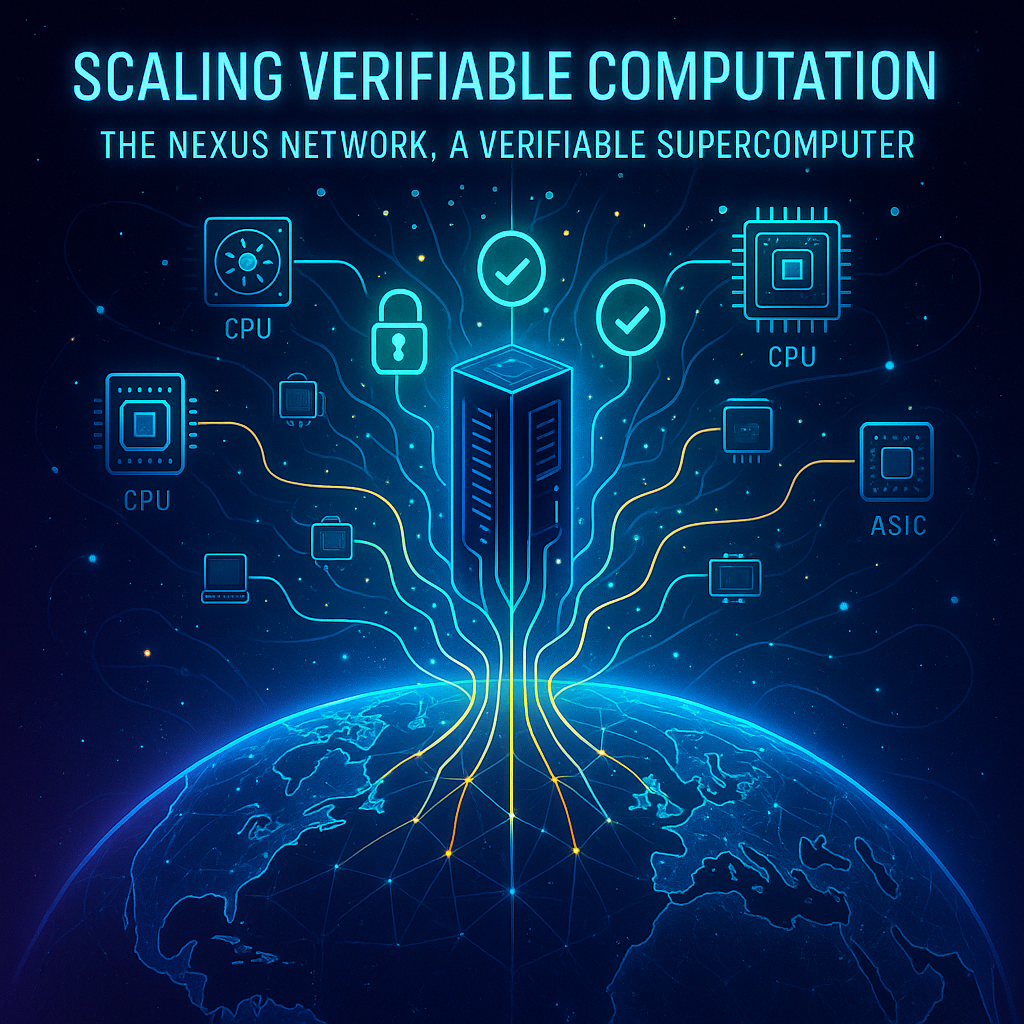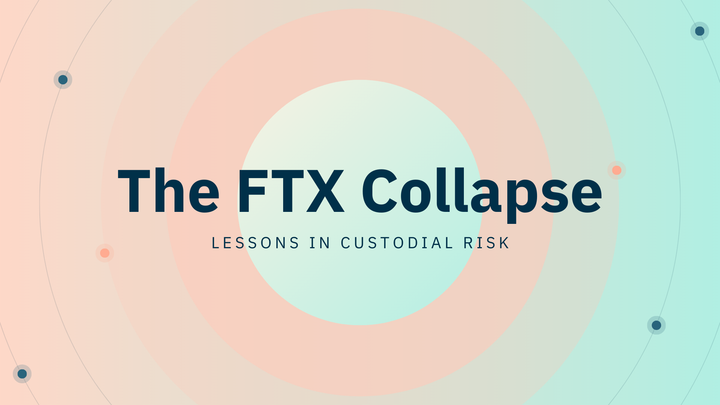Scaling Verifiable Computation: The Nexus Network, A Verifiable Supercomputer

In earlier articles, we explored two pillars of Nexus:
- 🧠 The Nexus Virtual Machine (NVM) — a minimal, audit-friendly CPU built specifically for zero-knowledge proofs.
- 🛠 The Nexus zkVM — a universal proving system that compiles and executes general-purpose programs, making them cryptographically verifiable.
These components solved a critical problem: how to make verifiable computation efficient at the micro level. But what happens when a single prover—even a highly optimized one—isn’t enough?
Welcome to the Nexus Network — a global infrastructure that turns the zkVM into a verifiable supercomputer. By distributing the computational workload across a global network, the Nexus Network also aims to drastically reduce the cost of verifiable computation, making it economically viable for widespread adoption.
🌍 What Is the Nexus Network?
The Nexus Network is the distributed proving layer that scales verifiable computation to Internet-level throughput. Think of it as:
The collective engine room behind the zkVM — coordinating thousands of provers to generate massive proofs in parallel.
🧩 Why It Exists: Aggregating Compute for Proving
At the heart of the zkVM’s performance is the Folding Stage—a massively parallel process that breaks computation into chunks and proves them independently.
The Nexus Network aggregates global compute power to execute this stage efficiently:
- Diverse hardware supported: CPUs, GPUs, FPGAs, ASICs.
- Arbitrarily small work units: Provers need as little as 1 GB of RAM.
- Plug-and-play participation: Run a single command —$ cargo nexus compute
The Nexus Network is fully open-source, implemented in Rust, and welcomes contributions from the community to further enhance its capabilities.
To maximize parallelism and efficiency, the network is divided into specialized nodes:
| Node Type | Role |
|---|---|
| MSM Provers | Perform multi-scalar multiplications (MSMs) on-demand |
| PCD Provers | Generate incremental proofs using recursive IVC |
| Aggregators | Combine and compress proofs into a single succinct zk-SNARK |
These nodes operate under a hierarchical aggregation tree, recursively folding proofs from the edges toward a central root, ensuring both scalability and verifiability.
🚀 The Vision: A Verifiable Supercomputer
The Nexus Network draws inspiration from legendary volunteer computing projects:
These projects demonstrated that global, decentralized compute power could solve problems no single supercomputer could handle. Nexus takes that a step further by:
🔒 Guaranteeing integrity through cryptographic proofs — not probabilistic guessing.
The goal? To prove trillions of CPU cycles per second using globally coordinated provers, all working in trustless harmony.
✅ What Makes Nexus Different: Provable Integrity
Past distributed systems relied on trust or redundancy to validate results.
Nexus uses math.
Every step of computation is accompanied by a zero-knowledge proof, verified recursively through:
- 🔄 Incremental Verifiable Computation (IVC)
- 🔐 Proof-Carrying Data (PCD) — enabling mutually distrustful provers to work together
- 🧩 Recursive aggregation — resulting in one succinct proof verifiable by anyone
These proofs are generated and aggregated using advanced proof accumulation techniques like Nova, CycleFold, and HyperNova, which enable high-speed proof generation without SNARKs during the Folding stage, before final compression with zk-SNARKs.
No blind trust. No re-execution. Just proof.
🧨 Unlocking Internet-Scale Verification
Let’s bring it all together.
The Nexus Network:
- ✅ Distributes the proving workload across global devices
- 🔁 Aggregates proofs recursively and verifiably in a tree-like structure
- 🔒 Guarantees correctness through zero-knowledge cryptography
- 🚀 Enables production-grade applications — from secure financial transactions to verifiable AI computations — all protected by mathematical proofs.
It’s not just a proof system. It’s a verifiable supercomputer—engineered for scale, trustlessness, and the future of decentralized computing. With ongoing development to add features like dynamic I/O support, the Nexus Network continues to evolve toward even greater accessibility and functionality.
🧵 From Architecture to Infrastructure
If the Nexus Virtual Machine (NVM) is the finely tuned CPU optimized for zero-knowledge, and the zkVM is the programmable engine built on top of it…
Then the Nexus Network is the infrastructure that makes it all scale.
Together, they unlock a world where verifiable computation becomes as scalable and accessible as cloud computing is today.
🧠 Want to dive deeper into the machine behind the machine?
Check out our earlier articles:
Similar Articles
zk‑SNARKs to zk‑STARKs: The Evolution of Zero‑Knowledge in Web3
Succinct SP1 zkVM: Democratizing Zero-Knowledge Proofs for Rust Developers
🧬 How Replacing the EVM with RISC-V Could Accelerate Mitosis’ Programmable Liquidity Vision
The Future of Web3 Security: Verifiability Without Visibility Using zkTLS and FHE
Unpacking Blockchain's Engines: A Comprehensive Look at Virtual Machines



Comments ()